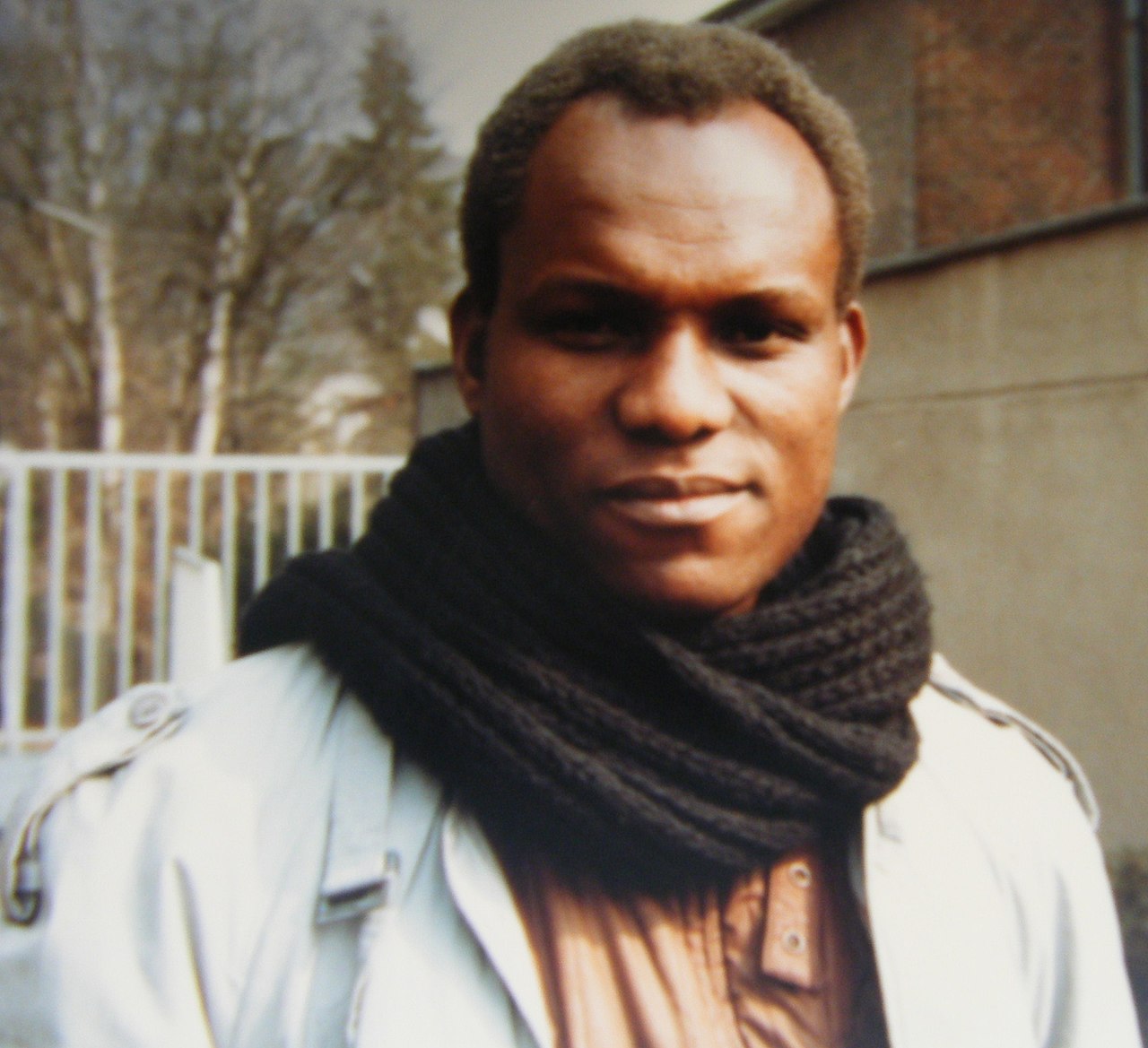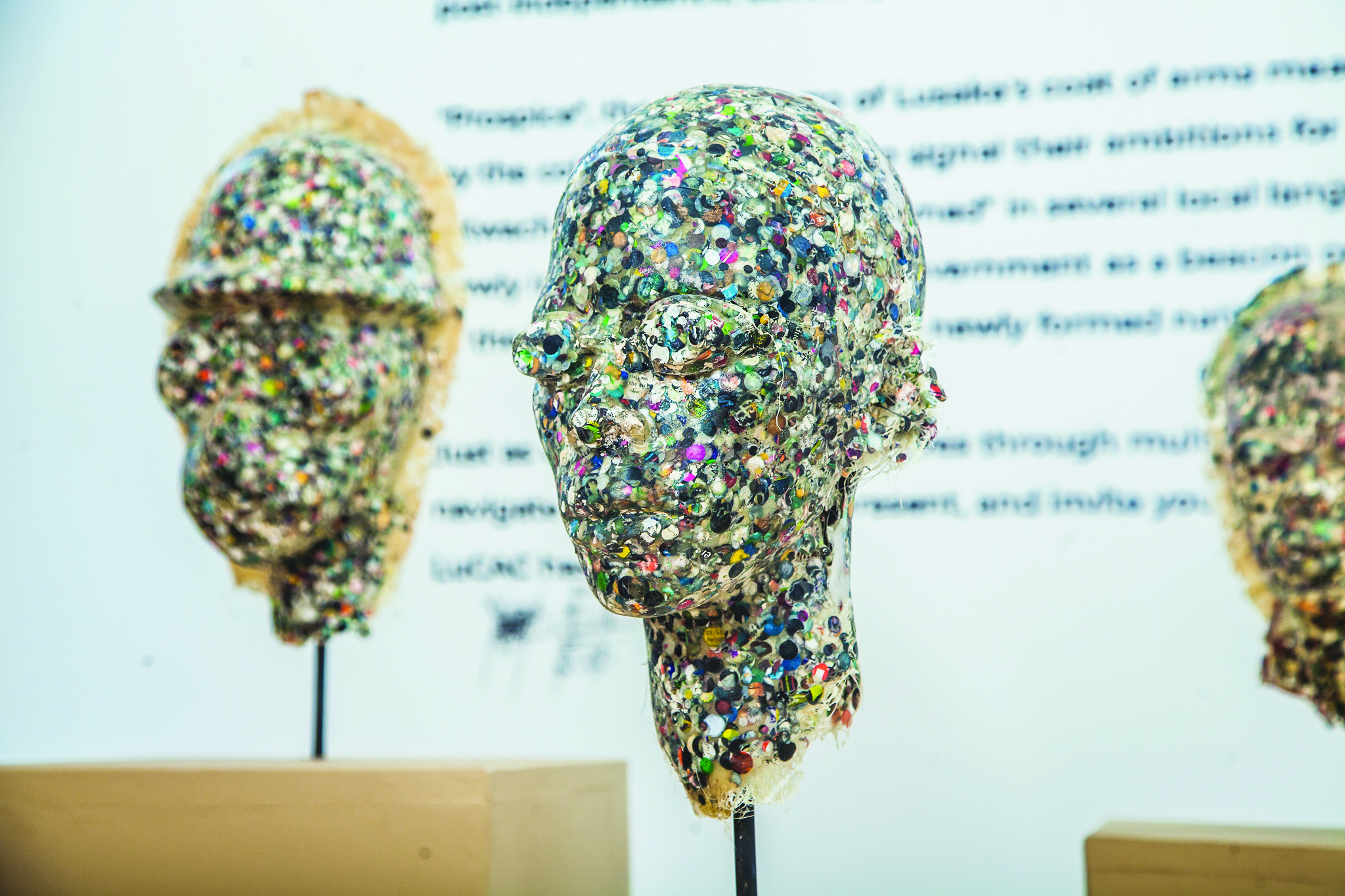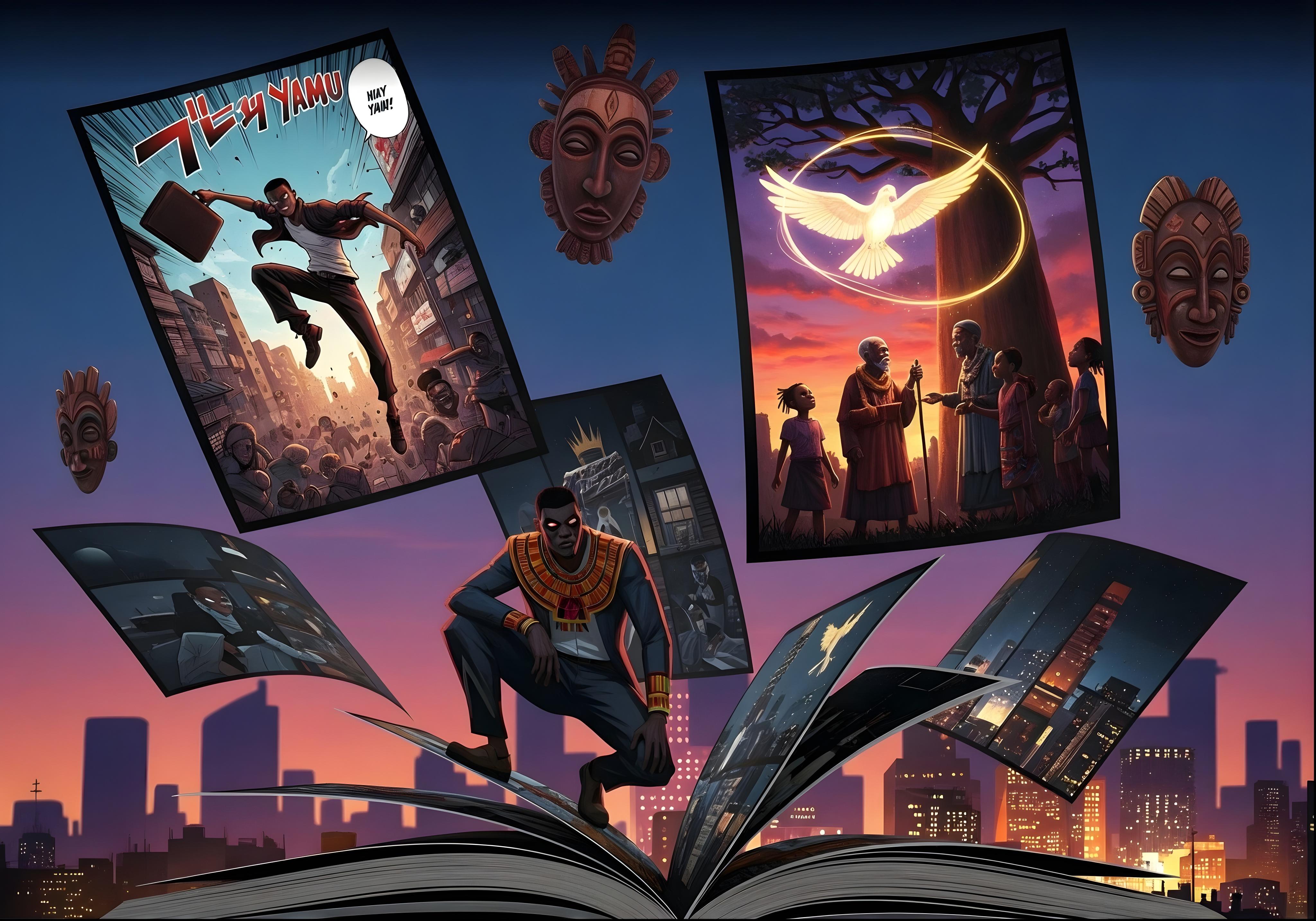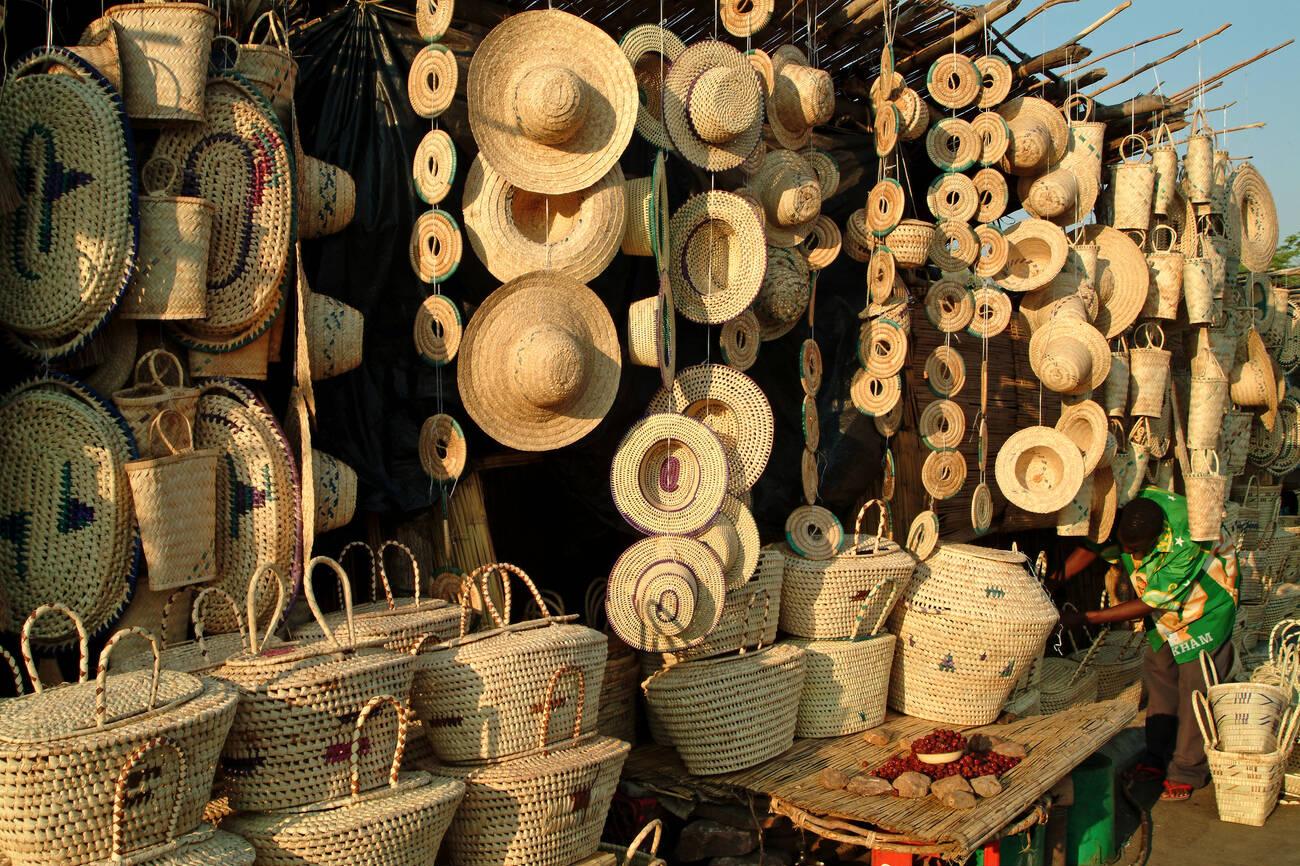Tom calmly waxes a just finished stone sculpture in the glaring sun at his home studio, Roots of Expression, in Lusaka’s Libala area. “I have to wax it so it has that lovely sheen after it dries”. Clad in stone dust covered jeans, a Tshirt and a towering red turban, he zig zags across the lawn, showing me various sculptures littered across his front lawn.
He is currently working on a series of semi abstract stone sculptures that he plans to submit to the Humanics Institute in Canada. The works are mostly incomplete as he is working on them simultaneously. One of the sculptures named ‘Oneness of reality’, sits just outside by the studio entrance. “The idea behind it is to show how everyone sees God differently. It’s like seeing a mountain from different angles. People in the West get a different perspective, the people in the East also get a different view, but it’s all the same mountain”, Tom says.
Various sculptures, belonging to other artists are dotted around the yard as well. Tom explains that the space is open to other artists to come and work from. Daut Makala, Agnew Masangu, Ntamanyile Sichamba, Clarence Albert and Nezias Nyirenda are among the many fellow artists who have worked there over the years.
While walking around, we come across more of his work; two traditional masks. The pieces are a representation of the Chokwe people’s female ancestor,Mwana Pwo. She is believed to be a guiding mother who helps young boys transform into adulthood at the Mukanda ceremony of the Luvale people of Northwestern Province.
The pieces are made of cast bronze and steel wire. The wire is obtained from burning car tyres, “The burning also helps give it a rusty appearance” Tom explains. The wire makes up the mane of hair protruding from the top half of the mask.
Tom tells me that it takes up to four weeks for him to produce one bronze mask. “There are many techniques one can use to create cast sculptures such as lost wax, sand and clay casting. For these particular pieces I used the sand casting method. It requires a two-piece crate to create the sand mold. I take one part of the crate and part fill it with sand and then I press a wooden model of my sculpture into the sand. I then take the other half and place it on top, and fill up the rest of the area around the model with sand, making sure to keep compacting the sand as much as possible. It’s a very labour intensive skill to create this and one requires a lot of patience in between the process; from making and curing the molds to melting the metal and waiting for it to cool in the molds. The final result is always worth it though.”
His motivation stems from his view that bronze and stone are simply different types of earth and he saw the perfect opportunity to combine the two materials in his artworks.
“I grew up around art, my late father, Martin Abasi Phiri, well known as MAP was an artist and my first art teacher. In fact he made the statue of the Warrior at the entrance of the Henry Tayali Art Gallery in the Showgrounds. In high school, I had the privilege of being mentored by one of the pioneers of modern sculpture in Zambia, the late Flinto Chandia during a workshop held at my school. I started out working with clay and moved to other materials like wood and stone, but when I learned how to do bronze casting, my heart settled on that because it’s unique. You can say the rest was history after that.”
His first solo exhibition is slated for next year, for now Tom’s work can be seen at the Henry Tayali and 37D Galleries and from some private collectors.
Mwana Pwo always makes an appearance with Cihongo, a male mask, and dances at events like the induction of a new chief, and funerals. They also dance as public entertainment.
The grace and elegant gestures of the Pwo mask is believed to teach Chokwe women to act in a graceful manner. Mwana Pwo reflects all the positive attributes of an ideal woman who can serve as a Chokwe role model.








